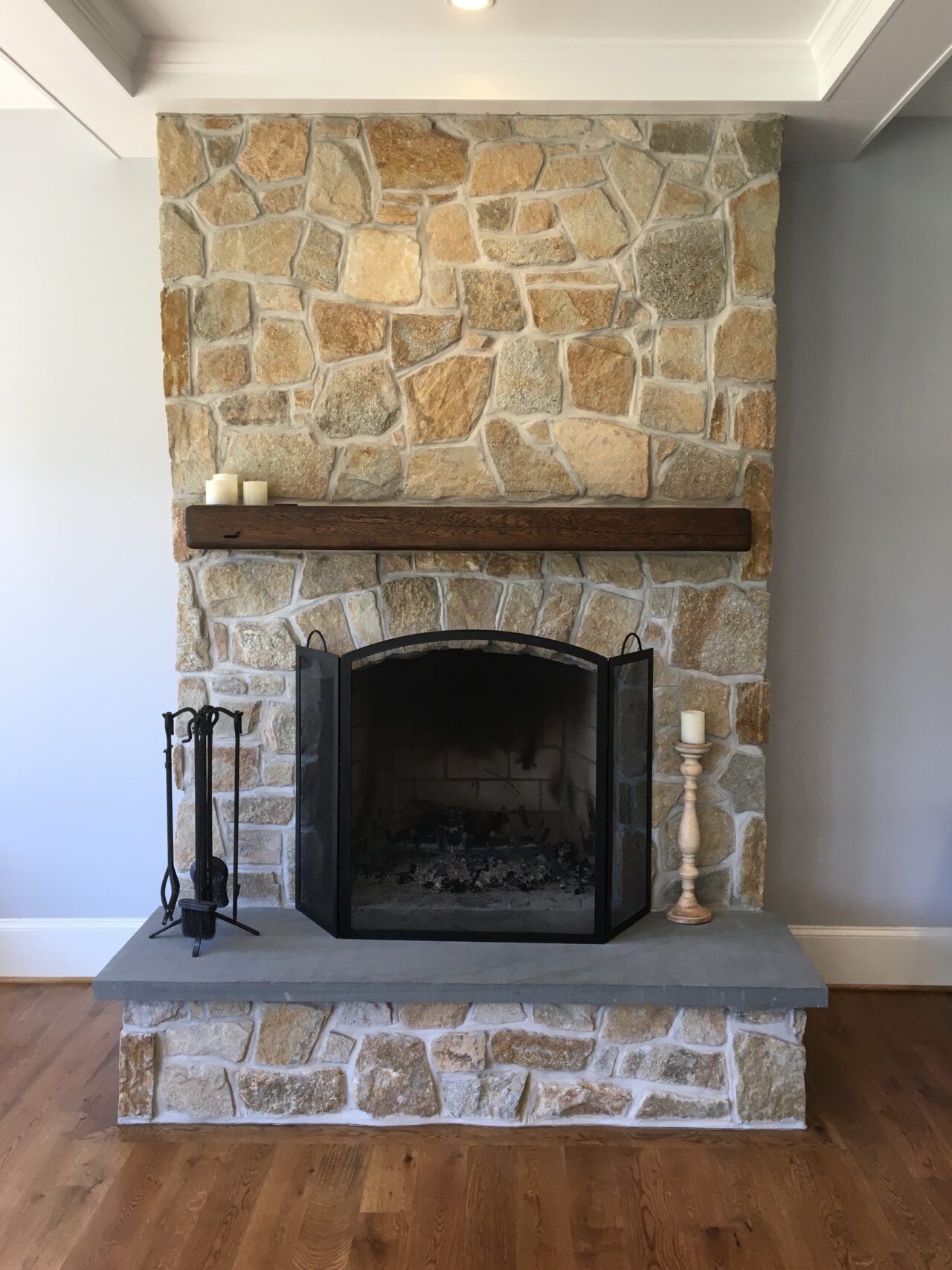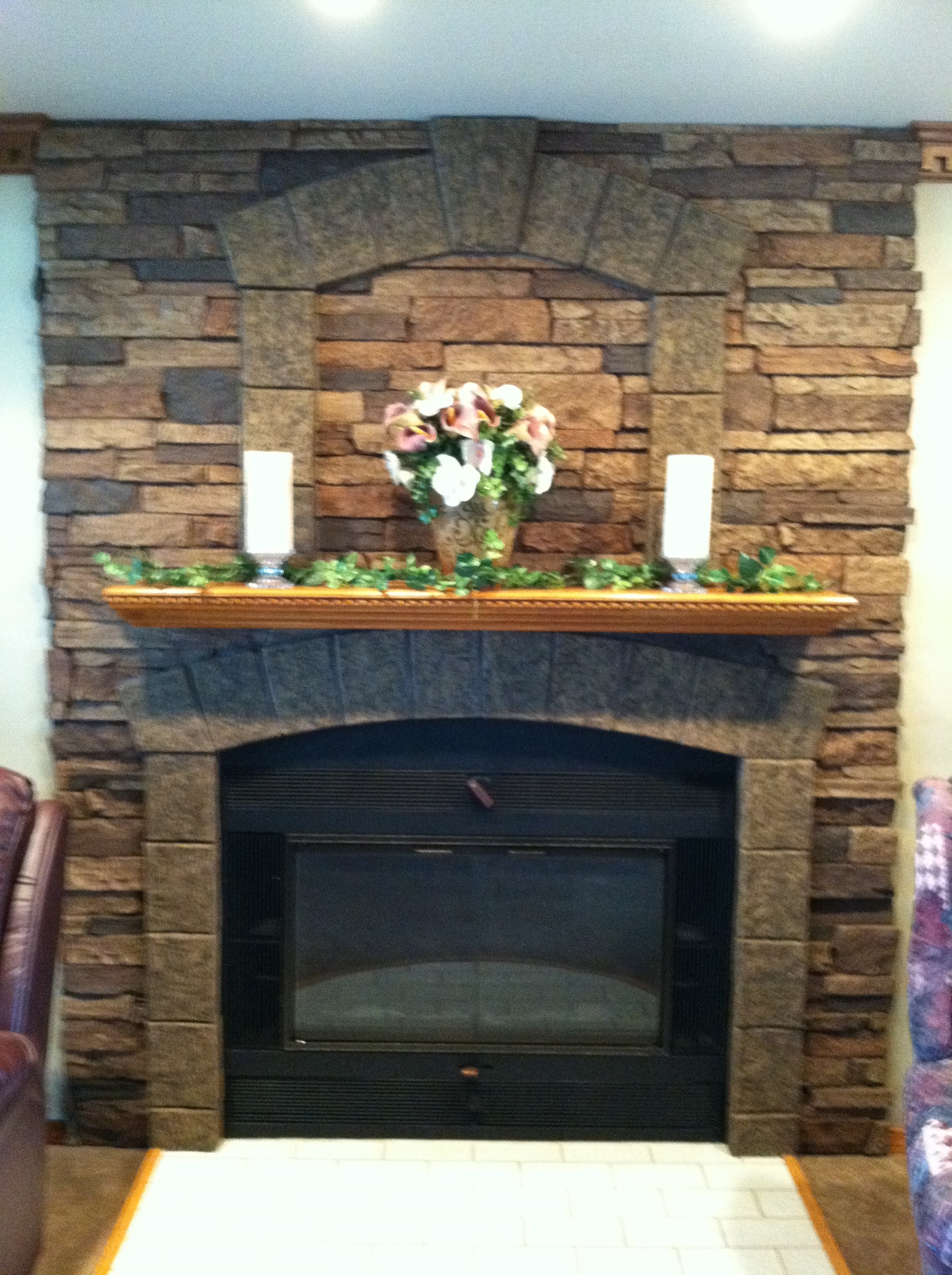Restoring Stone Fireplace
Restoring a stone fireplace can transform a tired, outdated hearth into a stunning centerpiece of your home. This process not only enhances the aesthetic appeal of your living space but also improves the fireplace’s functionality and safety. We will walk you through the benefits of stone fireplace restoration, essential preparatory steps, the restoration process, and maintenance tips to keep your fireplace looking its best.

Benefits of Stone Fireplace Restoration
Enhanced Aesthetic Appeal
Restoring a stone fireplace can dramatically improve the appearance of your living space. Over time, stone fireplaces can become discolored, chipped, or damaged, detracting from the overall look of your room. Restoration can bring back the natural beauty of the stone, highlighting its unique textures and colors. Whether you prefer a modern, sleek finish or a more rustic look, restoration allows you to tailor the fireplace to match your home’s decor.
Improved Safety
A well-maintained fireplace is crucial for home safety. Over time, mortar can crumble, stones can become loose, and creosote can build up in the chimney, all of which pose significant risks. Restoring your stone fireplace involves repairing these issues, ensuring that the structure is sound and that the fireplace operates safely. This process includes cleaning the chimney, fixing any structural weaknesses, and ensuring proper ventilation, reducing the risk of fires and carbon monoxide poisoning.

Increased Property Value
Investing in stone fireplace restoration can increase the value of your home. A beautifully restored fireplace is a desirable feature that can make your property more attractive to potential buyers. It demonstrates that the home has been well-maintained and adds a touch of luxury and elegance to the living space. This can be a significant selling point in the real estate market, potentially leading to a higher sale price.
Energy Efficiency
A restored fireplace can also improve your home’s energy efficiency. Cracks and gaps in the stonework and chimney can allow cold air to enter your home and warm air to escape, making your heating system work harder. By repairing these issues, you can prevent drafts and improve heat retention, which can lower your energy bills. Additionally, a clean, well-functioning fireplace burns fuel more efficiently, providing more warmth with less wood or gas.
Preparatory Steps for Stone Fireplace Restoration
Assessing the Condition
Before starting the restoration process, it’s crucial to thoroughly assess the condition of your fireplace. Look for signs of damage such as cracks, loose stones, or crumbling mortar. Check the chimney for creosote buildup or blockages, and inspect the hearth for any signs of wear and tear. Documenting these issues will help you determine the scope of the restoration work needed and prioritize tasks.
Gathering Materials and Tools
Once you have assessed the condition of your fireplace, gather the necessary materials and tools for the restoration. Common materials include mortar mix, replacement stones, and cleaning agents. Essential tools may include a chisel, hammer, wire brush, trowel, and safety gear such as gloves and goggles. Having all materials and tools on hand before starting the project will streamline the restoration process and prevent delays.

Planning the Restoration
Planning is a critical step in any restoration project. Develop a detailed plan that outlines each stage of the restoration, from cleaning and repairing to sealing and finishing. Determine whether you need professional assistance for more complex tasks such as structural repairs or chimney cleaning. Creating a timeline and setting a budget will help you stay organized and ensure that the project stays on track.
Ensuring Safety
Safety should be a top priority during the restoration process. Ensure the area around the fireplace is well-ventilated, and wear appropriate safety gear to protect yourself from dust, debris, and chemicals. If you’re dealing with structural repairs or working on the chimney, consider hiring a professional to handle these tasks safely. Additionally, make sure the fireplace is not in use and has completely cooled down before starting any restoration work.

You May Want to Check These Articles:
- Stone Fireplace Lintels
- Stone Fireplace In Living Room
- Paint Stone Fireplace Before After
- Trim Around Stone Fireplace
- Outdoor Stone Fireplace Designs

The Restoration Process
Cleaning the Stone Surface
The first step in the restoration process is cleaning the stone surface. Over time, soot, smoke, and grime can accumulate on the stones, dulling their appearance. Use a wire brush or a soft-bristled brush with a mixture of water and mild detergent to scrub the stones. For tougher stains, a stone cleaner specifically designed for fireplaces may be necessary. Rinse the stones thoroughly with clean water and allow them to dry completely before proceeding.
Repairing Cracks and Mortar Joints
After cleaning, inspect the stonework for cracks and damaged mortar joints. Use a chisel and hammer to remove any loose or crumbling mortar. Mix a batch of mortar according to the manufacturer’s instructions and use a trowel to apply it to the joints, pressing it firmly into the gaps. Smooth the surface with a damp sponge and allow the mortar to cure as specified. For larger cracks or missing stones, you may need to replace individual stones, ensuring they match the existing stonework.

Sealing the Stone
Sealing the stone is an important step to protect it from moisture and staining. Choose a sealant that is appropriate for the type of stone in your fireplace. Apply the sealant evenly across the stone surface using a brush or roller, following the manufacturer’s instructions. Sealing helps to enhance the stone’s natural color, prevents moisture penetration, and makes future cleaning easier. Allow the sealant to dry completely before using the fireplace.
Repainting or Staining
If desired, the final step in the restoration process is repainting or staining the stone to enhance its appearance further. Use a high-quality masonry paint or stain that is heat-resistant and suitable for use on stone surfaces. Apply the paint or stain in thin, even coats, allowing each coat to dry before applying the next. This step can help refresh the look of the fireplace and provide an additional layer of protection against wear and tear.

Maintenance Tips for a Restored Fireplace
Regular Cleaning
Regular cleaning is essential to maintain the appearance and functionality of your restored stone fireplace. Remove ashes and debris from the firebox after each use to prevent buildup. Clean the stone surface periodically using a mild detergent and water solution to remove soot and grime. Avoid using harsh chemicals or abrasive cleaners that can damage the stone or the sealant.
Inspecting for Damage
Periodically inspect your fireplace for signs of damage, such as cracks, loose stones, or deteriorating mortar joints. Early detection and repair of these issues can prevent more extensive damage and costly repairs down the line. Check the chimney for creosote buildup and blockages, and ensure that the flue and damper are functioning properly. Regular inspections will help maintain the safety and efficiency of your fireplace.

Professional Maintenance
Consider scheduling annual maintenance with a professional chimney sweep or fireplace technician. Professionals can thoroughly clean the chimney, inspect the fireplace and chimney structure, and perform any necessary repairs. This annual maintenance ensures that your fireplace remains in good condition and operates safely. Professionals can also advise on any additional maintenance needs based on the specific type of stone and construction of your fireplace.
Protecting the Stone
Protecting the stone surface from damage is crucial to maintaining its appearance. Use a fireplace screen to prevent sparks and embers from damaging the stone. Avoid placing heavy objects or applying excessive force on the stone surface, as this can cause cracks or chips. Consider using a hearth rug to protect the floor in front of the fireplace from soot and ash. Taking these precautions will help preserve the beauty and integrity of your restored stone fireplace.

Common Mistakes to Avoid
Skipping the Assessment
One common mistake is skipping the initial assessment of the fireplace’s condition. Failing to thoroughly inspect the fireplace can lead to overlooked issues that could cause significant problems later. Always start with a comprehensive assessment to identify all areas that need attention.
Using Incorrect Materials
Using incorrect or low-quality materials can compromise the restoration. It’s essential to use materials specifically designed for high-heat environments, such as fire-resistant mortar and sealants. Using inappropriate materials can lead to premature deterioration and potential safety hazards.
Inadequate Cleaning
Inadequate cleaning before starting repairs is another common mistake. Residual soot and grime can prevent new mortar and sealant from adhering properly to the stone surface. Thoroughly clean the fireplace to ensure that repairs and finishes bond effectively.
Ignoring Safety Protocols
Ignoring safety protocols during restoration can result in accidents and injuries. Always wear appropriate safety gear, ensure proper ventilation, and avoid working on a fireplace that is still hot. If the restoration involves structural repairs or chimney work, consider hiring a professional to handle these tasks safely.

What are the benefits of restoring a stone fireplace?
Restoring a stone fireplace enhances its aesthetic appeal, improves safety, increases property value, and can boost energy efficiency. Restoration brings back the natural beauty of the stone, ensures the structure is sound, and can make your home more attractive to potential buyers. It also helps prevent drafts and improve heat retention, leading to lower energy bills.
How do I know if my stone fireplace needs restoration?
Signs that your stone fireplace needs restoration include visible cracks in the stone or mortar, loose or missing stones, discoloration, and excessive creosote buildup in the chimney. If you notice smoke entering your home when the fireplace is in use, it may indicate ventilation issues that need to be addressed. Regular inspections can help identify these problems early.
What materials and tools are needed for stone fireplace restoration?
Common materials for stone fireplace restoration include fire-resistant mortar mix, replacement stones, stone cleaner, and sealant. Essential tools include a chisel, hammer, wire brush, trowel, and safety gear such as gloves and goggles. Depending on the scope of the project, you might also need masonry paint or stain for finishing touches.
Can I restore my stone fireplace myself, or should I hire a professional?
While some restoration tasks, such as cleaning and minor repairs, can be done by DIY enthusiasts, more complex tasks like structural repairs and chimney cleaning are best left to professionals. Hiring a professional ensures that the restoration is done safely and correctly, reducing the risk of accidents and further damage.
How do I maintain my restored stone fireplace?
Maintaining a restored stone fireplace involves regular cleaning, periodic inspections for damage, and protecting the stone surface from wear and tear. Remove ashes and debris after each use, clean the stone surface periodically, and schedule annual maintenance with a professional chimney sweep. Use a fireplace screen to protect the stone from sparks and avoid placing heavy objects on the stone surface.
Restoring a stone fireplace can significantly enhance the beauty, functionality, and value of your home. By understanding the benefits, preparing adequately, following the proper restoration process, and maintaining the fireplace, you can enjoy a stunning and safe hearth for years to come.

The crackling fire, the warm glow, the comforting scent of woodsmoke – these are the hallmarks of a stone fireplace. But time, neglect, and the relentless march of nature can leave even the most majestic hearth in disrepair. From crumbling mortar to cracked stone, a neglected fireplace can become a safety hazard and an eyesore. But fear not, for the art of stone fireplace restoration can breathe new life into your cherished hearth, transforming it from a forgotten relic into a focal point of beauty and warmth once more.

Related Posts:
- How To Build A Stacked Stone Fireplace
- Outdoor Stone Fireplace Cost
- Travertine Stacked Stone Fireplace
- White Stone Fireplace Ideas
- Stone Fireplace With Built In Bookcases
- French Country Stone Fireplace
- Stone Fireplace Design Pictures
- Stone Fireplace With White Mantle
- Faux Stone Fireplace Hearth
- How To Paint A Stone Fireplace White